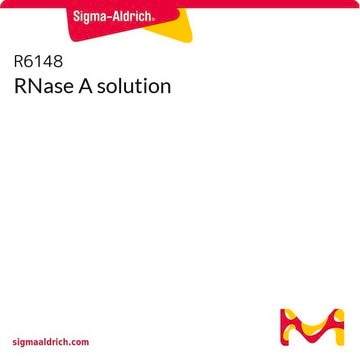P3088
Monoclonal Anti-Parvalbumin antibody produced in mouse
clone PARV-19, ascites fluid
Sinónimos:
Parvalbumin Antibody, Parvalbumin Antibody - Monoclonal Anti-Parvalbumin antibody produced in mouse
About This Item
Productos recomendados
biological source
mouse
Quality Level
conjugate
unconjugated
antibody form
ascites fluid
antibody product type
primary antibodies
clone
PARV-19, monoclonal
mol wt
antigen 12 kDa
contains
15 mM sodium azide
species reactivity
fish, frog, rabbit, canine, feline, bovine, pig, human, goat, rat
technique(s)
immunohistochemistry: suitable
indirect ELISA: suitable
western blot: suitable (10-20K titer using Mouse skeletal muscle extract expressing Parvalbumin protein)
isotype
IgG1
UniProt accession no.
shipped in
dry ice
storage temp.
−20°C
target post-translational modification
unmodified
Gene Information
human ... PVALB(5816)
rat ... Pvalb(25269)
General description
Monoclonal Anti-Parvalbumin (mouse IgG1 isotype) is derived from the PARV-19 hybridoma produced by the fusion of mouse myeloma cells and splenocytes from an immunized mouse. Parvalbumin is a calcium-binding protein.
Specificity
Immunogen
Application
Biochem/physiol Actions
PVALB (parvalbumin) expression serves as marker for differentiating tumors as benign and malignant, in relation with thyroid lesions. Decreased expression of parvalbumin positive interneurons in rat model is associated with schizophrenia, and is known to disturb neuronal activity.
Physical form
Storage and Stability
For extended storage freeze in working aliquots. Repeated freezing and thawing is not recommended. Storage in "frost-free" freezers is not recommended. If slight turbidity occurs upon prolonged storage, clarify the solution by centrifugation before use.
Disclaimer
Not finding the right product?
Try our Herramienta de selección de productos.
Optional
Storage Class
10 - Combustible liquids
flash_point_f
Not applicable
flash_point_c
Not applicable
Certificados de análisis (COA)
Busque Certificados de análisis (COA) introduciendo el número de lote del producto. Los números de lote se encuentran en la etiqueta del producto después de las palabras «Lot» o «Batch»
¿Ya tiene este producto?
Encuentre la documentación para los productos que ha comprado recientemente en la Biblioteca de documentos.
Nuestro equipo de científicos tiene experiencia en todas las áreas de investigación: Ciencias de la vida, Ciencia de los materiales, Síntesis química, Cromatografía, Analítica y muchas otras.
Póngase en contacto con el Servicio técnico







